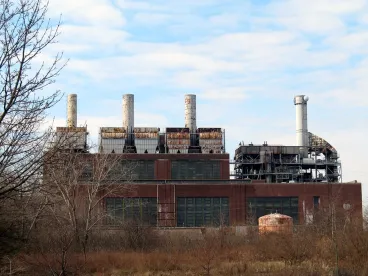From vapor intrusion systems to rooftop solar; green building to pollution legal liability insurance, environmental and real estate go hand-in-hand. Environmental issues are routine in all types of real estate transactions, no matter the size, location, or nature of the property and can potentially impact the land (including subsurface), the building, or both. Many of these impacts are captured within the due diligence period, but as a precaution it is important for real estate attorneys and practitioners to lend a keen eye to the intricacies of environmental issues, and take the time to evaluate the site and formulate a plan for any necessary remediation or alternative long-term solutions. In the Delaware River Valley, most parcels present some site contamination risk, but these properties have always presented unique opportunities for developers. Over the past two years, the potential of these properties has been further incentivized through Federal and state programs, increasing the ability of communities and investors to make “lemonade” out of real estate “lemons.”
One such federal program, the Opportunity Zone Program, was created and enacted by Congress through the Tax Cuts and Jobs Act in 2017. The program aims to address nationally imbalanced economic recovery in low income areas by offering tax incentives for investment to simulate long-term private sector investment. By offering these incentives to private investors to develop within a designated “Opportunity Zone,” the program is designed to facilitate improved infrastructure while spurring job and economic growth in hopes that it will lead to long-term investment and development in economically-depressed areas. These incentives are given with the expectation that growth stimulation in economically distressed communities will be targeted using private investment rather than taxpayer money. Since the first Opportunity Zone was designated in April 2018, the program has grown to over 8,700 sites within the United States and its territories. Pennsylvania, Delaware, and New Jersey account for 486 of those sites with 82 sites designated in Philadelphia
According to the PIDC, Philadelphia’s public-private economic development corporation, when an investor or developer chooses a project located in one of Philadelphia’s Opportunity Zones, they can also access existing local incentives to support business growth and development including a 10-year real estate tax abatement for new construction and renovations of residential and commercial property zones known as the Keystone Opportunity Zone. This incentive provides substantial relief from state and local taxes for qualified businesses located on Commonwealth-designated parcels of land, and flexible financing from the PIDC.
While Opportunity Zones are not designated based on contamination, environmental risk is certainly worth evaluating when considering investment and development within an Opportunity Zone. These sites often present elevated risk due to historic use, limited enforcement of environmental regulations, and/or the prohibitive financial investment required to maintain infrastructure. As investors and developers begin to explore the value of investing in Opportunity Zones thorough environmental diligence is essential.
Environmental due diligence is the process of assessing environmental conditions at a property to identify potential environmental liabilities prior to acquisition. The process can include Phase I and Phase II Environmental Site Assessments as well as a review of any number of relevant documents including, but certainly not limited to, permits, sampling data, and tank testing results. Completing sufficient due diligence serves several purposes including establishing statutory defenses under the Comprehensive Environmental Response, Compensation, and Liability Act (CERCLA), enabling the mitigation of risks through contract or insurance, developing a more fulsome understanding of the condition of the property before redevelopment, and satisfying lenders in order to obtain commercial loans. If the diligence process reveals a contamination issue, the property may also be eligible for certain benefits and incentives under the state or Federal brownfields programs.
For those who are unfamiliar, a “brownfield” is a property, the expansion, redevelopment, or reuse of which may be complicated by the presence or potential presence of a hazardous substance, pollutant, or contaminant. It is estimated that there are more than 450,000 sites in the United States. Last year, in March 2018, the Brownfields Utilization, Investment, and Local Development (BUILD) Act was enacted as part of the Consolidated Appropriations Act of 2018. The BUILD Act provides additional protections and incentives for brownfield redevelopment while prioritizing the development of renewable energy and energy-efficient projects. The BUILD Act did not significantly alter the landscape for brownfields purchasing or leasing but it did provide a handful of helpful updates. Those include a petroleum brownfield enhancement, the expansion of the definition of a bona fide prospective purchaser to include lessees of property, the expansion of eligibility for nonprofit organizations, increased funding for remediation grants and multipurpose grants, brownfields funding and technical assistance grants, and several new ranking criteria focusing on renewable energy, energy efficient projects, and revitalization of waterfront property, all of which will now be considered in grant applications.




 />i
/>i

